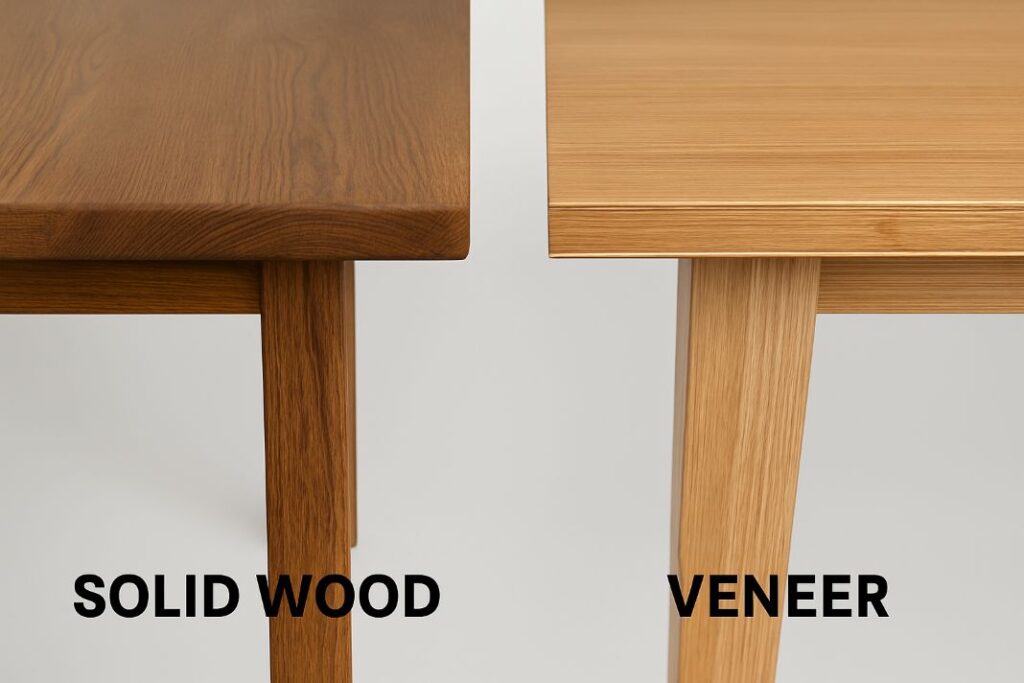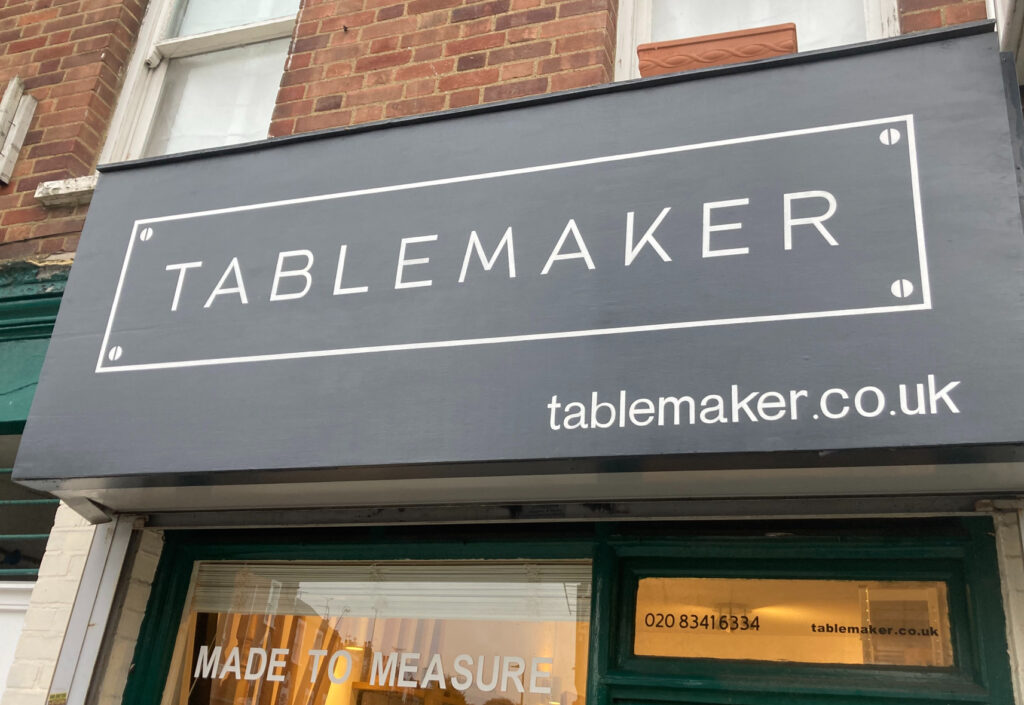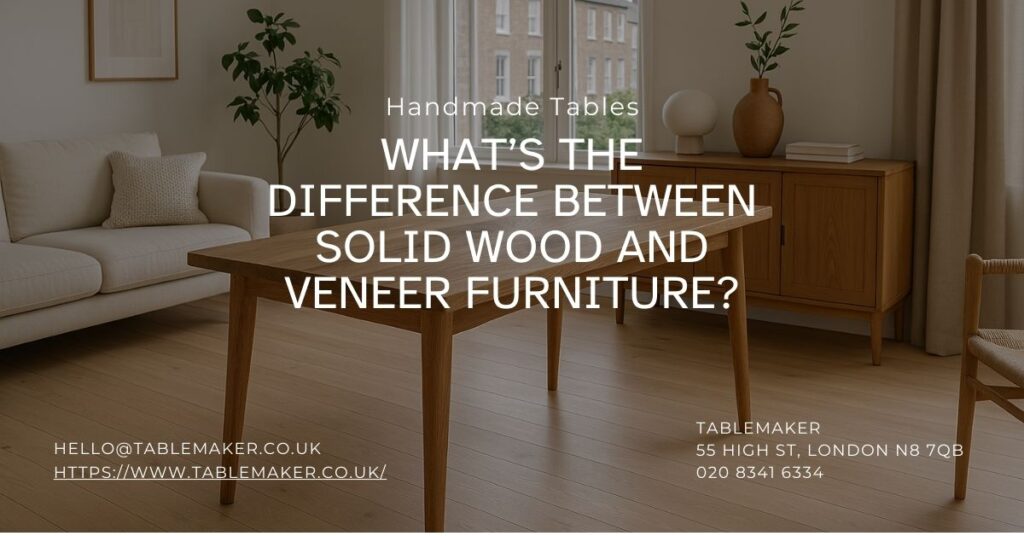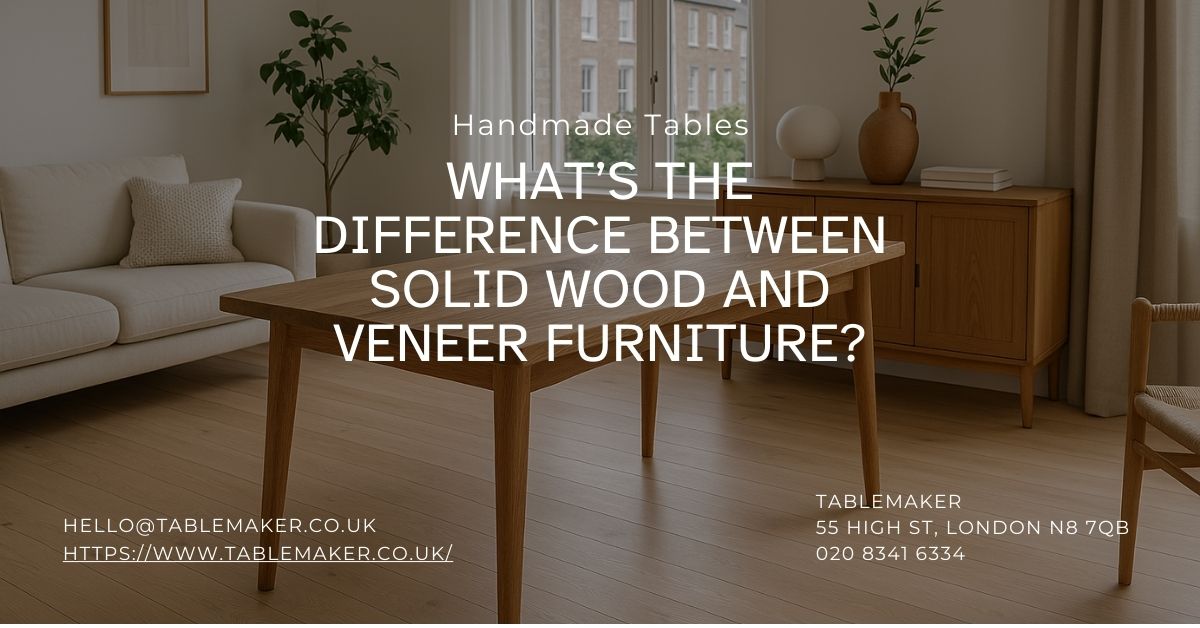
What is the difference between solid wood and veneer furniture?
Solid wood furniture is made using natural timber without any manufactured materials. Each piece is constructed from solid boards or blocks, which are joined using methods like mortise and tenon joints or dovetail joints. Veneer furniture, however, features a thin layer of real wood applied to a core made from engineered wood such as medium density fibreboard, plywood or particleboard. Although both use genuine wood, they differ significantly in structure, performance and longevity. Choosing the right type depends on your needs for durability, aesthetic preference and budget.
In this article about dining tables for small areas we have covered
- What is the difference between solid wood and veneer furniture?
- Why knowing the different matters when buying furniture
- What is solid wood furniture?
- What is veneer furniture?
- Solid wood vs veneer what are the structural differences?
- How durable is solid wood compared to veneer?
- Is solid wood furniture more expensive than veneer furniture?
- What are the techniques use to make solid wood and veneer furniture?
- When should you choose solid wood or veneer furniture?
- Clearing up myths about veneer and solid wood furniture
- How to maintain and care for your furniture
Why knowing the difference matters when buying furniture
Selecting furniture based on the materials used ensures you get the durability, appearance and value you expect. Solid wood and veneer each have specific strengths that suit different uses, and understanding them helps you make a practical and rewarding investment.
What is solid wood furniture?
Solid wood furniture is built entirely from timber. Common species include oak, walnut, maple, ash and beech. The wood is sawn, planed and shaped into furniture components, maintaining its natural strength and grain patterns.
Key features of solid wood
Solid wood offers authentic character, with each board showing unique knots, rings and colour variations. Hardwood species like oak and walnut are dense and resistant to wear, making them ideal for high traffic furniture pieces. Softwoods like pine offer a lighter appearance but are slightly more susceptible to dents.
Grades of solid wood explained
Furniture makers classify solid wood into grades such as prime grade, which offers minimal knots and consistent grain, and character grade, where natural features like knots and colour streaks are celebrated.
Pro Tip: For veneer furniture, look for pieces that use plywood rather than particleboard cores. Plywood offers better strength, durability and long term stability, especially for larger panels.
What is veneer furniture?
Veneer furniture features a thin slice of real wood bonded to an engineered core, offering a cost effective way to achieve beautiful finishes while reducing wood consumption.
How are veneers produced?
Veneers are made by slicing or peeling logs into thin sheets. Techniques include rotary cutting for uniform patterns, quarter cutting for straight grain and crown cutting for cathedral like figures.
Veneer vs laminate: what is the difference?
While veneer is real wood, laminate is a synthetic material often printed with a wood look design. Veneers provide the warmth and authenticity of real timber, whereas laminates offer durability but lack the natural beauty of wood.
Common types of veneer
Popular veneers include walnut, oak, maple, beech and birch. High quality veneers display consistent grain and colour, offering elegant appearances across large surfaces.
Build Your Dream Furniture with Tablemaker
Whether you prefer solid wood's such as oak or walnut, we can create timeless pieces designed for your space.
Explore Bespoke TablesSolid wood vs veneer: What are the structural differences?
Construction and materials
Solid wood furniture is built from single species timber throughout. Veneer furniture combines the beauty of real wood surfaces with stable engineered wood cores, improving resistance to warping and shrinkage.
Appearance and finish
Solid wood pieces vary naturally in grain and tone. Veneer allows for precise matching of patterns, creating a seamless, polished look ideal for contemporary designs.
Weight and stability
Solid wood furniture tends to be heavier and can be affected by humidity. Veneered furniture is lighter and more stable across varying conditions.
How durable is solid wood compared to veneer?
Lifespan of solid wood furniture
Solid wood furniture can last several generations. It stands up well to daily use and surface damage can usually be repaired through sanding and refinishing.
Durability of veneer furniture
Quality veneer furniture is highly stable. It resists movement and splitting better than large solid panels but requires care to prevent water damage to the surface layer.
Pro Tip: When choosing solid wood furniture, always ask about the moisture content and kiln drying process. Proper drying ensures better resistance against warping and cracking over time.
Is solid wood furniture more expensive than veneer furniture?
Material and labour costs
Solid wood is often more costly due to the amount of timber used and the skilled labour required for construction. Veneer furniture uses less wood and can be produced with greater efficiency.
Choosing between solid and veneer furniture
Invest in solid wood for heirloom quality pieces like dining tables and desks. Veneer is perfect for cabinets, wardrobes and large pieces where stability and cost effectiveness are priorities.
Which is more environmentally friendly: solid wood or veneer?
Sustainable sourcing and environmental impact
FSC certified timber ensures responsible forest management. Veneered furniture often has a smaller environmental footprint because a single log produces far more usable material.
What are the craftsmanship techniques for solid wood and veneer furniture?
Traditional joinery in solid wood furniture
Solid wood pieces often feature time honoured joints like dovetails and mortise and tenon, which provide strong and flexible connections without reliance on metal fasteners.
Veneer application and quality standards
Applying veneer correctly requires expert skill to avoid bubbles and misalignment. Quality veneered furniture uses high grade adhesives and precision techniques to ensure a strong and beautiful surface.
When should you choose solid wood or veneer furniture?
Best uses for solid wood
Tables, chairs and bed frames benefit from the strength and repairability of solid wood. These pieces offer longevity and natural charm.
Best uses for veneer
Veneer suits large pieces like wardrobes, sideboards and panelling where grain matching and stability are important.
Find the Perfect Furniture for Your Home
Ready to invest in quality furniture that lasts? Browse our range of handmade solid wood designs today.
View Our CollectionsClearing up myths about veneer and solid wood furniture
Is veneer furniture always low quality?
High quality veneer furniture is strong, attractive and often more stable than solid wood for large panels. It is used by top designers and found in prestigious interiors.
Does solid wood never warp?
Solid wood naturally moves with changes in humidity. Proper construction techniques and finishes help manage this movement but cannot eliminate it.
Is veneered furniture always cheaper?
Not necessarily. Premium veneered furniture made with superior cores and craftsmanship can match or exceed the price of some solid wood pieces.
How to identify if furniture is solid wood or veneer
Easy inspection methods
Check the edges and look for consistent grain running through the thickness of the board. Lift the furniture to assess weight and tap surfaces to judge density.
Simple tests you can do
Visible end grain, natural imperfections and variations often indicate solid wood. Repeating patterns and perfect uniformity suggest a veneer.
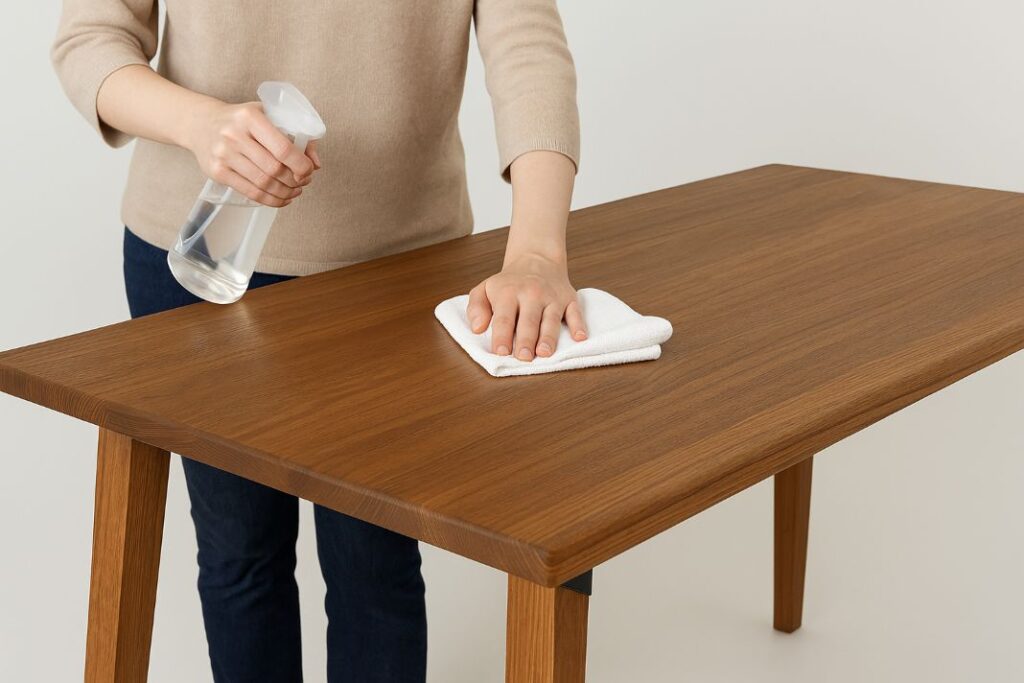
How to maintain and care for your furniture
Looking after solid wood
Dust regularly, polish occasionally and protect from extreme humidity or direct sunlight.
Caring for veneer furniture
Clean with a soft cloth and avoid excessive moisture. Address any damage promptly to prevent peeling or lifting.
Why trust Tablemaker for solid wood and veneer furniture
Our approach to solid wood furniture
We use responsibly sourced hardwoods and traditional construction methods to create pieces that are made to last.
Learn more about our Bespoke Furniture Services.
Customer stories and satisfaction
Many of our customers return time after time because they value the longevity, beauty and reliability of Tablemaker furniture.
Making an informed choice
Whether you prefer the timeless strength of solid wood or the versatile beauty of veneer, understanding your options helps you choose furniture that fits your life. Tablemaker is proud to offer a range of solid wood tables and desks, ensuring that every piece meets the highest standards for quality, design and responsibility.
Tablemaker
55 High St, London N8 7QB
02083416334
HVQM+58 London

